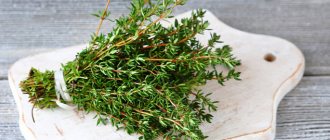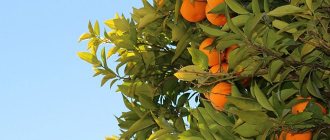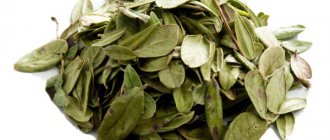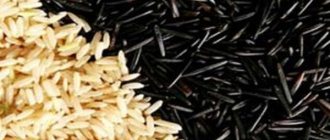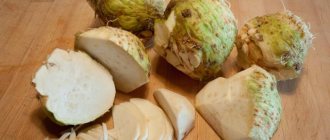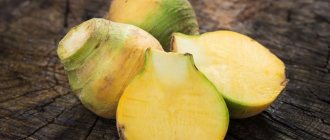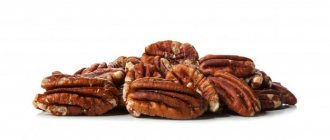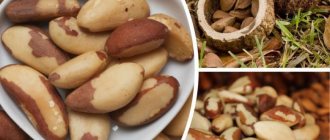Nutritional value and chemical composition
It is impossible to indicate the exact composition of the product, but it mainly includes:
- water;
- carbohydrates: fructose, glucose, sucrose, maltose, melitose, etc.;
- vitamins: A, B1, B2, B6, E, K, C, folic acid;
- minerals: calcium, iron, sodium, cobalt, aluminum, zinc, etc.;
- enzymes: invertase, diastase, catalase, acid phosphatase;
- free amino acids: threonine, proline, phenylalanine, methionine, lysine, glutamine, etc.;
- hormones;
- essential oils;
- acids: citric, malic, formic, succinic, lactic, acetic, gluconic, phosphoric, hydrochloric;
- phytoncides;
- alkaloids.
There are few protein substances - from 0.04 to 1.56%. The medicinal properties are determined not so much by the quantitative composition as by the combination of substances.
The calorie content of the product is high and amounts to 328 kcal per 100 g. A special feature is that its mineral and organic composition is similar to human blood plasma, therefore it has a high degree of bioavailability and is easily and quickly absorbed.
Composition of honey
- water – 18-20%
- glucose 34.8%
- levulose (fructose) – 39.6%
- sucrose – 1.3%
- dextrins – 4.8%
- minerals – 0.19%
- organic acids 0.1%
- vegetable protein 0.45%
- many other biologically active compounds
Honey also contains essential oils, dyes and acids.
Organic acids in honey: malic, citric, lactic, tartaric, oxalic and formic.
Due to the presence of acetic acid, honey begins to ferment (sour), to prevent this process honey is heated to 60 degrees, although honey cannot be heated above 50-60 degrees, because it loses all its properties.
Catalase is contained only in natural honey, so its naturalness can be determined in laboratory conditions. Catalase gets into honey along with pollen, and it is produced by plants.
Thanks to flower pollen, honey contains vitamins B2, B6, H, C, K, folic and pantothenic acids. These vitamins, with the exception of B2, are contained in very small quantities, but due to combination with other substances such as glucose, fructose (levulose), dextrins, mineral salts, organic acids.
Good honey crystallizes evenly and densely, but honey that contains a lot of water and fruit sugar becomes loose during crystallization. The first sign of the onset of crystallization is cloudiness of the honey.
High-quality honey is usually viscous. But the higher the ambient temperature, the less viscous it is.
Honey collected from different plants differs in aroma, taste and composition of ingredients.
The content of vitamins in honey increases due to an increase in the amount of pollen in it.
It is known that vitamins in vegetables, fruits and other foods inevitably and gradually decrease during storage.
This does not apply to honey. Vitamins and any other elements contained in them are perfectly preserved.
Product varieties
According to GOST, flower honey is divided into 3 types:
- Buckwheat - differs from other varieties in color: varies from dark amber to brown. The taste is bright, rich, tart. Contains a large amount of iron, has a pronounced restorative, wound-healing, regenerative effect. This variety is recommended for use in cosmetics, surgery, and for the treatment of wounds.
- Linden is aromatic, light, sometimes whitish, after crystallization it has an oily, finely crystalline structure. It is valued for its high amino acid content, which determines its use in the treatment of colds and infectious diseases. Children are recommended to take it as a general tonic and immunity booster. They treat mumps (mumps), convulsions, mastitis, cystitis, etc.
- Sunflower - light yellow in color, reminiscent of melted butter. Crystallization can be either coarse or fine, depending on the region and storage conditions. It has a characteristic weak aroma and a tart, pronounced taste. More than other varieties, it is rich in carbohydrates, amino acids and enzymes. It is recommended to use to strengthen blood vessels and myocardium - it has a positive effect on the cardiovascular system, removes toxins.
The remaining varieties are of mixed botanical origin and fall under the definition of forbs or simply floral.
Honey, which is considered the most delicious and healthy:
- Acacia - has a beneficial effect on the nervous system, has an aroma and delicate taste, and is the least allergenic.
- Sweet clover - oily or medium-grained. After crystallization, it has a light yellow color and a pleasant aroma, delicate taste with a hint of vanilla.
- May - the aroma and taste depend on the plants from which the bees collected nectar. Rich in bioactive substances, phytoncides, natural antibiotics.
- Meadow - the abundance of various plants gives the product a strong aroma and pronounced taste. It contains a large amount of vitamins and minerals.
- Chestnut is a dark variety with a bright aroma and a specific sweet taste with bitterness.
- Fireweed - light, almost white, with a creamy consistency. It has a delicate, pleasant aroma of fireweed. Healers call it “male” because it has a positive effect on the genitourinary system of men and treats prostatitis.
Types of honey
- Monofloral types of honey
Acacia honey
Acacia honey is the most liquid type of honey; it lasts for a long time in the form of syrup. Acacia honey has a delicate aroma and pleasant taste.
Color: fresh honey is light transparent in color, after crystallization it becomes milky.
Medicinal properties: restorative, antiseptic, anti-inflammatory, expectorant, restorative.
Used to treat: flu and colds, skin diseases (dermatitis, eczema, psoriasis), insomnia, gastrointestinal, biliary and kidney diseases.
Barberry honey
Barberry honey has a pleasant aroma and delicate sweet taste.
Color: golden yellow.
Medicinal properties: antiseptic, hemostatic, cleanses blood vessels and normalizes the functioning of the entire body as a whole.
Used to treat: gastritis with high acidity, flatulence, stomach ulcers, thrombophlebitis.
Boudyakov honey (from thistle)
Budyakov honey has a pleasant aroma and taste. During crystallization, boudyakov honey becomes fine-grained.
Read also: Mesodissolution - fat removal without surgery
Color: It can be colorless, greenish or golden.
Medicinal properties: antiseptic, restorative, anti-inflammatory.
Used to treat: flu and colds, insomnia, skin diseases, to strengthen blood vessels.
Cornflower honey
Cornflower honey has a pleasant taste with a bitter aftertaste. The smell is reminiscent of almonds.
Color: greenish yellow.
Medicinal properties: anti-inflammatory, analgesic, diuretic.
Used to treat: chronic skin diseases, eye diseases, kidney diseases, when the body is exhausted, removes inflammation.
Heather honey
Heather honey has a weak aroma and a tart, bitter taste. It hardens very quickly, creating difficulties when pumping it out of the honeycomb.
Color: dark yellow or red-brown.
Medicinal properties: antiseptic, anti-inflammatory, tonic.
Used to treat: lack of appetite, gout, rheumatism, asthma, gastrointestinal diseases.
Pea honey
Pea honey is transparent and has a pleasant and delicate aroma and taste. Children really like it.
Color: transparent slightly yellowish.
Medicinal properties: antibacterial, anti-inflammatory, antipyretic.
Used for treatment: treatment of the digestive system, colds and flu.
Mustard honey
Mustard honey has a pleasant aroma and taste.
Color: when liquid it is golden yellow in color, and when it solidifies it becomes creamy in color.
Medicinal properties: antiseptic, anti-inflammatory.
Used to treat: colds, flu, respiratory diseases.
Buckwheat honey
Buckwheat honey has a high content of proteins and minerals with a very pleasant, strong, specific aroma and taste. Recommended for pregnant women.
Color: light brown with a reddish tint.
Medicinal properties: antiseptic, renews the blood, cleanses the vascular bed, promotes the regeneration of damaged tissues, increases the level of hemoglobin in the blood.
It is used to treat: anemia, vitamin deficiency, diseases of the digestive system, liver disease, to prevent atherosclerosis and as a heart strengthening agent.
Sweet clover honey
Sweet clover honey has a specific taste, sometimes slightly bitter, and with the smell of vanilla.
Color: Light amber to white, sometimes with a slightly greenish or greenish-golden tint.
Medicinal properties: sedative, diuretic, expectorant, antibacterial, anti-inflammatory, analgesic, stimulates milk production in nursing mothers.
Used for the treatment of: atherosclerosis, hypertension, externally, as an analgesic for boils (boils).
Angelica honey
Angelica honey has a pleasant aroma and taste.
Color: greenish or red-brown.
Medicinal properties: antibacterial, anti-inflammatory, tonic.
Used to treat: colds and flu, stomatitis, gingivitis, gastrointestinal diseases, to improve the functioning of the central nervous system, pharyngitis, sore throat, laryngitis, cystitis.
Blackberry honey
Blackberry honey has a very pleasant taste.
Color: transparent as water.
Medicinal properties: antiseptic, anti-inflammatory, tonic.
Used to treat: colds, flu, kidney diseases, cervical erosion, colpitis, vulvitis, atherosclerosis, hemorrhoids, thrombosis.
Chestnut honey
Chestnut honey has a faint aroma of chestnut flowers and a bitter aftertaste.
Colour: transparent, darkening over time.
Medicinal properties: natural antibiotic, antiseptic, anti-inflammatory, tonic.
Used to treat: gastrointestinal diseases, kidney diseases, colds, flu, bronchitis, asthma, diseases of the genitourinary system, strengthens the cardiovascular system.
Clover honey
Clover honey is very tasty; when crystallized, it turns into a thick mass, one of the best varieties of honey.
Color: colorless, almost transparent.
Medicinal properties: lactic effect (for nursing mothers), antibacterial, anti-inflammatory, tonic.
Used to treat: vitamin deficiency, gastrointestinal diseases, colds and flu.
Swallow honey
Swallow honey has a delicate aroma and excellent taste.
Color: light with a yellow tint.
Medicinal properties: antiseptic, anti-inflammatory, tonic.
Used to treat: insomnia, colds, flu.
Linden honey
In terms of healing properties, linden honey is the champion among honey. It has a pleasant linden aroma and specific taste.
Color: pale yellow, quickly crystallizes into small crystals and becomes whitish in color.
Medicinal properties: antibacterial, expectorant, anti-inflammatory and mild laxative.
Used to treat: sore throat, runny nose, laryngitis, bronchitis, tracheitis, bronchial asthma, as a heart strengthener, for inflammation of the gastrointestinal tract, kidney and biliary diseases. Heals and disinfects purulent wounds and burns.
Burdock honey
Burdock honey is the most viscous honey with a sharp, pleasant aroma. Bees collect this honey from small flowers of hairy burdock and burdock.
Color: light yellow with a dark olive tint.
Medicinal properties: diuretic, choleretic, antiseptic.
Used to treat: gastrointestinal diseases, skin diseases.
Alfalfa honey
Alfalfa honey quickly crystallizes and takes on the consistency of thick cream. This honey has a pleasant aroma and specific taste.
Color: from white to amber.
Medicinal properties: restorative, antiseptic, anti-inflammatory.
Used to treat: flu and colds, gastrointestinal diseases, cardiovascular diseases, improves blood and lymph, lowers blood pressure.
Raspberry honey
Raspberry honey has a very pleasant aroma and wonderful taste, it seems to melt in your mouth.
Color: light golden, when crystallized it becomes creamy.
Read also Kalina. Description, composition, beneficial properties and recipes for preparing viburnum
Medicinal properties: antiseptic, relieves nervous tension and fatigue, returns the body to tone during prolonged physical activity.
Used for the treatment of: flu and colds, vitamin deficiency, kidney and respiratory diseases.
Melissa honey
Melissa honey has incomparable taste. It is minty and slightly sour.
Color: transparent with a golden tint.
Medicinal properties: anti-inflammatory, antibacterial, restorative.
Used to treat: neurosis, cardiovascular system, flu and colds, gynecological diseases, liver.
carrot honey
Carrot honey tastes good and smells good.
Color: dark yellow.
Medicinal properties: anti-inflammatory, restorative, antibacterial.
Used to treat: flu and colds, gastrointestinal diseases, eye diseases.
Mint honey
Mint honey has an indescribable taste. It has a very pleasant aroma and taste. Contains a large amount of vitamin C (ascorbic acid). Crystallizes into small grains of light yellow color.
Color: amber.
Medicinal properties: choleretic, sedative, analgesic, antiseptic.
Used to treat: gastrointestinal diseases, colds and flu, constipation, insomnia, oral diseases.
Dandelion honey
Dandelion honey is very thick and viscous and crystallizes quickly. It has a strong odor and pungent taste.
Color: golden yellow.
Medicinal properties: antiseptic, anti-inflammatory, tonic.
Used to treat: colds and flu, liver disease, loss of appetite, anemia.
Sunflower honey
Sunflower honey has a pleasant taste and a faint pleasant aroma.
Color: In liquid form it is light golden in color, but sunflower honey quickly crystallizes into large crystals and turns yellow.
Medicinal properties: antiseptic, diuretic, nourishing and bactericidal.
Used to treat: heart disease, diarrhea, bronchitis, malaria, improving intestinal functions, relieving digestive colic, atherosclerosis, osteoporosis, neuralgia, colds and flu.
Orange honey
The smell of orange honey is reminiscent of citrus flowers. It has a very pleasant taste. One of the highest quality varieties of honey. Contains a lot of iron, magnesium, copper. Simply necessary for the proper development of the child.
Color: transparent light orange.
Medicinal properties: anti-inflammatory, antiseptic, tonic.
Used to treat: vitamin deficiency, flu and colds, hemorrhoids, rheumatism, gout, varicose veins, radiculitis, urolithiasis.
Motherwort honey
Motherwort honey has a delicate aroma and a pleasant specific taste.
Color: straw light golden.
Medicinal properties: antiseptic, anti-inflammatory, tonic.
Used to treat: nervous and cardiovascular systems, colds and flu.
Rowan honey
Rowan honey has a strong pungent aroma and pleasant taste, as well as a long aftertaste.
Color: reddish.
Medicinal properties: anti-inflammatory, antibacterial, restorative.
Used to treat: kidney disease, hemorrhoids, colds and flu, improves immunity.
Bruise honey
Blue honey has a spicy aroma and an incredibly pleasant taste. It crystallizes slowly and has a thick consistency.
Color: light amber.
Medicinal properties: antibacterial, anti-inflammatory, tonic.
Used to treat: insomnia, respiratory problems, flu and colds.
Pumpkin honey
Pumpkin honey is very tasty and has a pleasant aroma. Crystallizes quickly.
Color: golden yellow.
Medicinal properties: anti-inflammatory, antiseptic.
Used to treat: digestive organs, colds, flu.
Blueberry honey
Blueberry honey is very tasty, beautiful and healthy honey.
Colour: light in color with a reddish tint.
Medicinal properties: anti-inflammatory, tonic, antiseptic, rejuvenating, soothing.
Used to treat: ulcers, gastritis, strengthens the walls of blood vessels, improves blood circulation, rejuvenates the body, energizes, elevates mood, restores vision, relieves stress, treats colds, flu, sore throat, pharyngitis and stomatitis.
Sage honey
Sage honey has a delicate aroma and a pleasant bitter taste.
Color: light amber.
Medicinal properties: anti-inflammatory, tonic, antibacterial, hemostatic, diuretic.
Used to treat: arthritis, thyroid diseases, cholecystitis, obesity, colds and flu.
- Polyfloral types of honey
Mountain honey
Mountain honey is collected by bees in alpine meadows, at an altitude of more than 1000 meters. The smell is similar to forest honey. Very tasty and aromatic. Collected mainly from: thyme, sage, pink rhodiola, honeysuckle, hawthorn, chestnut, clover, oregano, mountain acacia and fireweed.
Color: from yellow to green.
Medicinal properties: restorative, anti-inflammatory, antibacterial.
Used to treat: respiratory organs, flu and colds, gastrointestinal diseases, calms the nervous system, sclerosis, rheumatism, gynecological diseases, prevents the emergence of malignant cells.
Forest honey
Forest honey is collected by bees from: rose hips, hawthorn, Tatarian maple, viburnum, willow, linden, raspberries, blackberries, lingonberries, fireweed, heather, oregano, lungwort, strawberries, rowan, acacia and blueberries.
Color: from light yellow to dark brown.
Medicinal properties: anti-inflammatory, antiseptic, tonic.
Used to treat: gastrointestinal diseases, kidney diseases, flu and colds.
Meadow honey
Meadow honey is collected by bees from: dandelion, shepherd's purse, thyme, thyme, white clover, mouse pea, meadow thistle, wild mallow, St. John's wort, hogweed, sweet clover, cornflower, sage, chicory, motherwort, and tartar. It tastes very pleasant and has the aroma of a bouquet of blooming meadow herbs.
Yellow color.
Medicinal properties: restorative, anti-inflammatory, bactericidal, analgesic.
Read also Nettle - medicinal properties, composition, contraindications, recipes and treatment with nettle
Used to treat: kidney diseases, gastrointestinal diseases, colds and flu.
May honey
May honey is collected by bees in April-May. Consists of: hazel, alder, willow, coltsfoot, violet, Norway maple, bird cherry, dandelion, sage, garden trees and bushes.
Color: golden.
Medicinal properties: restorative, antibacterial, anti-inflammatory.
Used to treat: gastrointestinal diseases, colds and flu.
Field honey
Field honey also tastes very good and has a pleasant aroma. Bees collect it from: coriander, sainfoin, lavender, rapeseed, sow thistle, budjak, pikulnik, gill, phacelia, sunflower, rapeseed, buckwheat, alfalfa, mustard.
Color: from light amber to brown.
Medicinal properties: anti-inflammatory, tonic, bactericidal, soothing.
Used to treat: the nervous system, headaches, insomnia, pain in the solar plexus, normalizes heartbeat, flu and colds.
Unusual types of honey
Stone honey. A very rare type of honey, it is collected by wild bees. It got its name not because it is collected from stone, but because it is collected onto stone. It looks like a candy, since the honeycomb contains almost no wax.
Powdered honey. It has not yet been determined which honey plants the bees collect this type of honey from. It differs from other varieties in that it has a powdery consistency.
Tobacco honey. This type of honey tastes bitter with the aroma of tobacco. It is brown in color and crystallizes very slowly. Its properties have been studied very little, which is why tobacco honey is not yet recommended for consumption.
Express honey. This type of honey is produced as follows: bees are given 50-55% sugar syrup for processing, to which medicinal substances, juices and vitamins are added. This type of honey is not popular.
Poisonous honey or drunken honey. It is collected by bees from the nectar of flowers of azalea, mountain laurel, andromeda, rhododendron pontius, hellebore, heather and wild rosemary. In its pure form it is poisonous. Just 50-100 g of this honey causes headache, vomiting, diarrhea, pale or blue face, increased heart rate, weakness, itching, and sometimes cramps. This honey is non-toxic for the bees themselves. For humans, signs of poisoning appear 20 minutes and up to 2 hours after ingestion. The terrible condition can last 4-5 hours.
Benefits and harms for the human body
Any type of honey, if it is natural, properly stored and collected in an environmentally friendly area, has a healing effect and is good for health.
The honey product has the following properties:
- antioxidant;
- anti-inflammatory;
- immunomodulatory;
- hepatoprotective;
- antitumor;
- antimetastatic;
- wound healing;
- analgesic;
- choleretic;
- sedative;
- anticonvulsants;
- hematopoietic;
- antithrombotic;
- antiprotozoal;
- antifungal;
- secretory;
- detoxification.
Bee sweetness can be harmful if overused.
For men and women
The product is equally useful for male and female bodies.
Women need for:
- treatment of inflammatory and infectious diseases of the pelvic organs;
- elimination of adhesions in the ovaries;
- increasing fertility, increasing the ability to conceive;
- therapy of mastitis and mastopathy;
- normalization of hormonal levels;
- stabilization of the menstrual cycle;
- treatment of dermatoses, vitiligo, acne.
Bee products for men:
- prevent the development of heart disease;
- improve microcirculation and blood supply to organs, enhancing erectile functions;
- prevent prostate hyperplasia;
- improve spermatogenesis and sperm characteristics;
- increase testosterone levels;
- fight alopecia.
For children
Honey should be administered to children in doses and not earlier than 1 year of age. This is a highly allergenic product that can cause allergies, including angioedema.
If there is no pathogenic reaction, honey can be used for:
- general improvement in the condition of febrile symptoms;
- increasing immunity;
- treatment of colds and infectious diseases;
- strengthening thinking abilities: memory, attention;
- replenishing the body with nutrients.
Uses of honey
Cinnamon with honey for weight loss
Cinnamon tea with honey for weight loss. 1/2 cup water, 1 cinnamon stick, 1 tablespoon honey. To boil water. Place a cinnamon stick in a mug and pour boiling water into it. Leave for 10 minutes. Remove the cinnamon stick from the tea. When the tea has cooled down and is less than 50 degrees, add honey to it. Drink like tea.
Green tea, cinnamon and honey. 1 glass of water, 1 teaspoon of cinnamon powder, 1 teaspoon of honey, 2 teaspoons of green tea. Mix cinnamon powder and honey. Boil water and add green tea to it. When the water has cooled and is less than 50 degrees, add the water to the container with cinnamon and honey. Mix well. Drink like tea.
Cinnamon, honey and lemon. 1.5 cups water, 1 teaspoon cinnamon powder, 1 teaspoon honey, 1 teaspoon lemon juice. Boil the water. Mix cinnamon powder, honey and lemon juice. Add boiled water cooled to 50 degrees to the mixture and mix well. Drink like tea.
Ginger with honey beneficial properties
- Helps with indigestion
- Prevents dental problems
- Prevents cancer development
- Improves heart health
- Relieves stress
- Prevents fungal infections
- Treats joint pain
- Treats asthma
- Improves the functioning of the gastrointestinal tract
Video: ginger with honey
Honey with raspberries beneficial properties
- Helps reduce weight
- Reduces wrinkles
- Preventing infections
- Cancer Prevention
- Strengthens immunity
- Supports women's health
Honey with walnuts: beneficial properties
- Reduces high blood pressure
- Treats anemia
- Is an aphrodesiac
- Treats stomach ulcers
- Helps prevent inflammation
- Helps prevent prostate adenoma
- Increases vitality
- Replenishes vitamin deficiencies
Honey with turmeric beneficial properties
- Treats indigestion
- Treats colds
- Cures the flu
- Treats asthma
- Treats hypertension
- Treats high blood pressure
- Reduces blood sugar levels
- Treats arthritis
- Treats diabetes
- Treats heart diseases
- Reduces cholesterol levels
- Treats depression and anxiety
- Treats inflammation of wounds and burns
- Treats eczema, psoriasis and acne
- Protects the liver and kidneys
Honey cream
For the cream you will need: 3 cups of yogurt, 1 cup of honey. Put honey in cold yogurt and beat well with a blender.
Honey with lemon beneficial properties
Honey with lemon has long been considered an excellent cough remedy, suitable for adults and children.
Recipe 1 . Boil 1 lemon over low heat for 10 minutes. Due to this, more juice will be obtained from the lemon. Cut the lemon in half and squeeze the juice into a glass. Add 2 tablespoons glycerin. Stir well. Add honey until the glass is full. Instead of lemon, you can use natural homemade apple cider vinegar. The dosage depends on the intensity of the cough. For rare coughs, 1 teaspoon per day will be enough. If the cough is severe - 3-4 teaspoons per day. The product must be shaken before use.
Recipe 2. Honey with lemon for colds. You need to take 100 g of honey, juice of 1 lemon, 1 glass of warm milk. Mix all.
Video: Black radish with cough honey
Methods of application
The product can be taken internally or externally, administered in the form of tampons, turundas, suppositories in the body cavity, used as compresses, rubbing, wraps. The properties of honey change depending on temperature, for example, with strong heating, most nutrients are destroyed. Therefore, it should be used warm or cold.
For better absorption, it is recommended to consume fresh product for adults at 100-150 g/day, and for children - 30-50 g/day, 2 hours before the main meal.
Honey as an integral element of the human diet
This useful beekeeping product is rightfully considered one of the most ancient elements of the human diet. Already in ancient times, people collected honey from wild bees and used it as one of their staple foods.
This data is confirmed by rock paintings left by our ancestors in different regions of the globe. On them you can make out figures of people collecting this delicacy from wild hives. Subsequently, the tradition of consuming this product led to the development of beekeeping, thus people provided themselves with an additional source of food.
Honey contains a huge list of substances and microelements:
- Carbohydrates. They are the basis and make up approximately 70% of the composition. Carbohydrates are the energy needed by every person for normal life;
- Various amino acids. They have a beneficial effect on metabolism in the body, promote the breakdown of fats, and are responsible for cell regeneration;
- A huge supply of vitamins of almost all groups;
- Useful substances: zinc, potassium, phosphorus, iron, selenium and so on;
- Glucose, sucrose, fructose;
- Unique enzymes: catalase and diastase, which stimulate the functioning of the gastrointestinal tract and help remove toxins from the body.
Depending on the collection site and the plants from which the bees collected nectar, the composition of beekeeping products can vary significantly. However, it has been proven that the composition always includes about 40 active substances that have a beneficial effect on the condition of our body.
Is it possible to consume honey during pregnancy and breastfeeding?
If pregnant women are not allergic to honey, it is allowed to consume it, because it:
- alleviates the condition of toxicosis;
- stimulates blood supply to the placenta and pelvic organs;
- relieves swelling;
- makes it easier to fall asleep;
- saturates with nutrients;
- normalizes digestion;
- helps to avoid synthetic medications for colds;
- strengthens gums;
- reduces anxiety.
During breastfeeding, milk or tea with honey will help increase lactation, improve general condition, and reduce fatigue.
Honey - harm and contraindications
It turns out that there are a number of recommendations from experts on how to avoid making honey a harmful product. For example, when it is heated, the entire structure of the product changes completely, its beneficial properties become some kind of hoax. This is why honey should not be washed down with hot tea or milk - these liquids in combination with honey must be warm.
You should not overuse honey - its use should be controlled, since too much of the delicacy in question regularly eaten can trigger the development of diabetes.
Honey causes tooth decay, even faster than sugar and sweets. Doctors recommend thoroughly rinsing your mouth after each use of the product in question, and ideally brushing your teeth.
It is not recommended to eat honey on an empty stomach if breakfast is not expected in the first half hour after the treat in the morning. The fact is that honey, entering an empty stomach, stimulates/starts the functioning of the entire digestive system. But if, 30 minutes after drinking honey on an empty stomach, a full meal does not enter the stomach, then this can lead to increased insulin production - a deterioration in health is guaranteed.
Please note: many people have an allergic reaction to honey. Some “get off” with only hives-type skin rashes and itching, but for many, a spoonful of honey can provoke the development of anaphylactic shock.
It is not recommended to give to children under 3 years of age - this is recommended by official medicine. But even if we allow the product in question to be consumed in early childhood, then this delicacy is definitely contraindicated for infants.
How to choose the right product
A quality product must be chosen correctly.
Natural mature honey:
- has a uniform color without inclusions, spots, foam;
- has a pleasant smell;
- should stretch in an even thin stream without breaking;
- laid in a mound, which is quickly leveled.
Additives can be identified using simple methods: when adding a drop of iodine to honey with starch, a reaction will occur - the fake will turn blue. If the product begins to foam when vinegar is added, it has been diluted with chalk.
Meadow, sunflower, buckwheat, linden products crystallize within 1-1.5 months. If it is liquid in winter, then it was heated. Experienced people distinguish good honey by color, smell, taste, and sensation. Inexperienced buyers are better off purchasing the product from a trusted seller.
Interesting facts about honey
There are many legends and myths about honey, but there are also some proven facts that will be of interest to everyone. Here are just a few of them :
- In Russia, the main supplier of honey to the tables of residents is Siberia - this is surprising, because this product began to be “extracted” there only 200 years ago.
- The champion in honey production in the world is China, but the most expensive variety of this delicacy can only be purchased in Israel (for 1 kg of honey they give 300 dollars!).
- Honey never spoils and retains its beneficial properties for an unlimited amount of time - this product was found during the opening of Tutankhamun’s pyramid and it tasted no worse than fresh.
- Honey perfectly cleanses the lungs of harmful substance deposits in smokers, and a tablespoon of this product will quickly restore well-being against the background of excessive alcohol consumption.
- Honey collected by bees from different flowers is more useful - when purchasing a product, give preference to “forbs”.
- The delicacy in question contains almost the entire periodic table of useful substances, but the secret of the benefits of honey is that these substances in it represent an ideal formula for absorption by the human body. And honey has no analogues in this!
- If chilled meat is poured with honey, it will not spoil even at room temperature for 30-40 days.
- By adding the product in question to the butter dough, not only the high taste of the final product is ensured, but also the long-term preservation of the freshness of the baked goods.
Honey is a unique product that both official medicine, cosmetic therapy, and traditional healers recognize as beneficial for the human body. Of course, you need to know and take into account contraindications and restrictions on the use of this delicacy, but you should not completely ignore honey.
14, total, today
( 168 votes, average: 4.61 out of 5)
Tilapia fish - benefits and harm
Mint: benefits and harm
Related Posts
Application in cosmetology
In cosmetology, honey products are used for:
- treatment of rosacea;
- eliminating photoaging;
- removing dead cells as a scrub;
- treatment of acne, pimples, acne;
- getting rid of cellulite;
- cleansing and reducing pores;
- toning and moisturizing the skin;
- restoration of muscle tone and facial contours;
- removing toxins and cleansing the body;
- losing weight.
Cosmetology companies produce a large number of facial, body, and hair care products based on beekeeping products.
The benefits of honey for the male body
Honey is important and valuable for the male reproductive system and is a natural aphrodisiac. With its frequent use with high-calorie foods, such as nuts, men's libido increases and male strength increases, because honey improves immunity and normalizes the activity of the whole body. Doctors recommend using honey constantly to enhance potency.
It is also useful in the treatment of acute and chronic prostatitis, diseases of the prostate gland, as it improves blood circulation in the pelvic area.
Composition and beneficial properties
The composition of natural honey is a unique product that is used as a fragrant delicacy, as well as a source of health, vitality and longevity.
The natural product consists of more than 100 useful substances that are considered vital for the human body. 80% are carbohydrates - fructose, sucrose, glucose. The exact proportions of these substances differ depending on the variety.
The percentage of substances in honey
The important point is that such substances are quickly and easily absorbed by our body, since they belong to simple carbohydrates.
These carbohydrates are important for the body to maintain the energy of the nervous, muscular, and immune systems. A lack of these substances can lead to a decrease in mental and physical activity, human performance, and provoke the development of diseases.
In addition to carbohydrates, the composition includes 15% water, 3-3.5% protein compounds, a large number of various minerals and trace elements. Among which are iron, calcium, sodium, manganese, phosphorus, magnesium, zinc, sulfur, iodine, chlorine, copper, cobalt, potassium, etc.
| Vitamins | mg/100 g product | Minerals | mg/100 g product |
| AT 2 | 0,03-0,07 | Iron | 1,2 |
| AT 3 | 0,15-0,25 | Calcium | 4-5 |
| E | 1 | Potassium | 25-30 |
| AT 6 | 0,3-0,32 | Sodium | 24-26 |
| RR | 0,3-0,35 | Magnesium | 2-2,5 |
| WITH | 2,0-2,5 | Phosphorus | 1-1,4 |
| N | 0,4 | Cobalt | 0,05 |
| B5 | 0,05-0,1 | Zinc | 0,02 |
| B8 | 0,03-0,06 | Copper | 0,03-0,04 |
| AT 9 | 0,015 | Chlorine | 0,04 |
It is impossible to overestimate the healing contribution of the beneficial substances that are included in the bee product. Since calcium is the main building material of bone and cartilage tissue, iron increases hemoglobin, etc. The lack of the described microelements in the body disrupts its normal functioning, metabolism, and upsets the balance of the body.
Thus, among vegetable fat products, honey is considered the richest in microelements and minerals.
It is worth noting the usefulness of the enzymes contained in it. Namely, diastase, invertase, catalase, acid phosphatase, etc. These elements help speed up the metabolic process. The source of enzymes in the product is plant pollen, as well as the bee body itself.
Honeycomb of bees
In addition to the listed elements, the bee processing product contains many organic acids. Such as citric acid, malic, oxalic, lactic, tartaric, folic, pantothenic acid.
With the help of the conducted research, biogenic stimulants were identified in honey, which help strengthen the vitality and vitality of the human body.
The healing and beneficial properties of honey are determined by its chemical composition. Vitamins, micro- and macroelements, enzymes, acids, phytoncides and other useful substances allow you to:
- restore immunity;
- have a general strengthening effect on the cardiovascular system;
- successfully cure colds and infectious diseases;
- stop the development of inflammatory processes;
- heal wounds quickly and effectively;
- treat various skin diseases;
- regulate pressure;
- remove waste and toxins from the body.
The high sugar content and strong and pleasant smell have made honey a widespread component of many culinary products. The ability of the bee product to rejuvenate the skin, remove acne and pimples from the face, and restore the shine and fullness of the hair has turned it into an indispensable home remedy for skin and hair care.
Honey should be consumed regularly for preventive purposes. It prevents:
- gastrointestinal diseases;
- oncological diseases;
- atherosclerosis;
- infectious and fungal diseases;
- sore throat and flu;
- depression;
- chronic fatigue.
Honey for men
Honey provides invaluable assistance to the stronger sex in their fight against purely male diseases: prostatitis, prostate adenoma, weakened potency.
Since ancient times, it has been known how honey is beneficial for men. First of all, he is a strong aphrozodiac. By using honey for potency, many males have maintained family harmony in the intimate sphere.
The effect of honey is enhanced if its beneficial properties are used in combination with other natural products:
- Nuts. A mixture of honey and nuts not only increases potency, but also increases the number of sperm, while simultaneously enhancing their activity. The most popular recipe is with 3 cups of chopped walnuts and a glass of honey. Take 2 tbsp. spoons twice a day. The main thing is to do this regularly and not drink alcohol. Then male strength is effectively restored. To improve sperm survivability, a mixture of nuts (hazelnuts, walnuts, peanuts) is crushed and filled with water. After 2 hours, the water is drained. Nuts are mixed with 2 tablespoons of bee product. Within a week, potency improves.
- Horseradish, carrots and beets. Take a glass of beet and carrot juice, 1 liter of vodka, a glass of grated horseradish and bee product. All ingredients are mixed in an enamel pan and placed in a cool place for infusion for 2 weeks. Take 1 teaspoon in the morning, before meals, and in the evening, before bed.
- Ginger. Ginger is finely chopped or grated. Take 1 tbsp. a spoonful of honey and 1 teaspoon of spice and pour a glass of boiled warm water. The entire mixture is drunk at once. Taken twice daily. Helps with premature ejaculation and erectile dysfunction.
We invite you to familiarize yourself with the Commodity Dictionary | K | Stationery adhesives
An infusion of plantain and birch leaves, crushed bearberry and hernia, poured with 0.5 liters of boiling water, helps with prostatitis. Infuse in a thermos for an hour. Add 45-50 g of honey to the cooled mixture and mix thoroughly. The resulting remedy is taken for 10 days in the morning after meals.
The best varieties in the treatment of male diseases are considered to be bee products from jasmine, marjoram, and orchids. But especially worth noting is the Turkish honey collected in the Makacheli Valley. It cannot be mixed with other products - it is taken in its pure form, but its effect is not inferior to, for example, honey with nuts.
Honey for women
The benefits of honey for women are undeniable. The presence of phytohormones, phytoncides, alkaloids, tannins and tannins in it makes it possible to treat very delicate, especially female diseases. A wide range of vitamins, micro- and macroelements and enzymes makes it the best preventive and therapeutic agent for pregnant women and nursing mothers.
Treatment of gynecological diseases involves the simultaneous internal and external consumption of this medicinal product. Ingestion improves immunity. It, in turn, mobilizes the body to fight gynecological diseases.
The anti-inflammatory, wound-healing and antiseptic properties of honey make it possible, when inserted into the vagina, to relieve pain and restore the microflora and epithelium of the cervix. It is used in the form of tampons, applications and douching. The course of treatment is 10-15 days. If problems persist, you should consult a specialist.
In the treatment of endometriosis, honey is very effective in helping drug treatment. It can be used in the form of compresses on the lower abdomen, tampons and applications in the vagina. Traditional healers recommend enhancing the effects of bee products with herbal teas.
There is no doubt about the benefits of honey for women during pregnancy and breastfeeding. At this time, the mobilization of all the body's resources is required. In addition, pregnant women and nursing mothers are prohibited from taking many medications. The healing properties of the sweet product come to the rescue. It supports immunity, copes with colds and infectious diseases. Regular consumption of a medicinal product allows you to:
- defeat toxicosis;
- get rid of insomnia;
- Avoid bouts of morning sickness.
Honey stimulates lactation well.
Benefits for children
Long-term observations of the development of children who consumed honey on a regular basis showed that they develop better, are less susceptible to colds, are more resistant to sudden climatic changes and are more adapted to industrial ecology.
It is recommended to give it to children from 2 years of age. The maximum dose is 1.5 teaspoons. From 3 years, the dose can be doubled.
The inability of the baby's body to process some biological compounds of bee sweetness often leads to hurricane intoxication of the body.
The effect of the medicinal properties of honey is best reflected in the treatment of runny nose and cough in children. Canadian and American scientists have found in experiments that it cures colds more effectively than synthetic drugs.
Despite all the variety of honey varieties, the chemical list of substances has virtually no differences. The difference lies only in the volume of one or another connection.
https://www.youtube.com/watch?v=ndRt9THvjyE
Experts have conducted a lot of research, so the composition of the beekeeping product has been studied thoroughly. More than three hundred biologically active substances have been identified in it, which are difficult to list. More than 80% of the volume is allocated to carbohydrates, which are not harmful to health. Saccharides are presented in the form of glucose, fructose, maltose.
The composition also contains many vitamins, among them the precious group B. Thiamine, pyridoxine, folic acid, riboflavin and others - all of them are needed to normalize a person’s emotional background.
Honey is not deprived of vitamin H, PP, and ascorbic acid. In combination, these substances support the immune system, free blood channels from cholesterol, and have a positive effect on the brain.
The product contains alkaloid and nitrogenous substances, enzymes, protein compounds, amino acids, aromatic components, hormones, lipids.
Honey also boasts the presence of organic acids and phytoncides. All substances are calculated as a percentage, but the figures vary depending on the territorial location in which the raw materials are collected.
Honey for children
- In the absence of contraindications, the bee product will be an excellent and healthy addition to the daily diet. Almost every person knows the beneficial qualities of honey. The composition takes pride of place among medicinal delicacies.
- Systematic eating of sweet medicine will protect the child from vitamin deficiency and protect his body from the attack of viral diseases. In addition, regular intake of bee product will have a positive effect on the baby’s mental activity.
- Honey is considered an effective preventative against influenza epidemics. The composition quickly eliminates the symptoms of the disease. Soon the cough, colds and sore throats disappear. Honey also has a positive effect on the child’s nervous system.
- The bee product acts as a natural antidepressant. Such properties are especially important when the child is subjected to heavy mental stress. Also, raw materials eliminate sleep problems and fully strengthen the body.
- If the child does not have an allergic reaction to the product, honey will have a positive effect on the activity of the gastrointestinal tract. The composition also has a beneficial effect on bone tissue, cartilage and ligaments. Valuable components improve hair structure and skin condition.
Harm of honey to humans
Honey and allergies
- It is important to understand that, despite all the benefits, bee products can significantly harm the human body. It is worth noting that honey has a fairly high calorie content. Therefore, raw materials are strictly contraindicated for obese people.
- There is no doubt that the product is quite valuable and beneficial for the body, but if you have an allergic reaction, consumption of the composition is strictly prohibited. In addition, raw materials should not be given to small children under 3 years of age. The growing body is simply unable to digest active enzymes.
- Don't try to consume more honey than you should. You should not think that such a move will help you recover faster and saturate your body with the necessary substances. Often such actions have the completely opposite effect.
- It is important to understand that overeating honey provokes the development of serious problems with the pancreas and kidneys. For a healthy person, the maximum daily intake should not exceed 45 grams. Do not neglect practical recommendations.
Despite the many medicinal qualities of honey, you should be very careful when consuming it, because... sometimes it can be harmful. Limit yourself from taking the product if you have cirrhosis of the liver, gallstones, or absence of a gallbladder.
Honey can be harmful to people who have high stomach acidity and are in a post-heart attack state. Use with caution if you have allergic reactions or obesity. The calorie content of 100 g of honey is 320 kcal.
Thus, with careful use of the healing product, in consultation with specialists, you will get rid of many unwanted problems without causing complications to the body.
Contraindications and precautions
Honey should not be considered a panacea for all diseases. Often, thoughtless adherence to medical treatment and excessive passion for it are not beneficial, even if we are talking about a natural and high-quality product. Honey can cause allergies, and its calorie content and high carbohydrate content complement the list of contraindications, among which the main ones are individual intolerance and allergic reactions.
Honey is a treat that should be eaten in moderation. It should be used with caution if you have diabetes, and only after consulting a doctor. It is not recommended to give it to children, especially babies under one year old. Despite the fact that it is recommended as a useful product for pregnant women, you need to remember that it can lower blood pressure. Therefore, when consuming honey during pregnancy, it is necessary to monitor blood pressure, and if it drops, discard the product.
Before using honey for cosmetic purposes, you need to conduct a tolerance test. To do this, a small amount of the product that contains it is applied to an area with sensitive skin, most often on the wrist or the inner crease of the elbow. It is necessary to observe for some time to see if there is any redness, itching or irritation of the skin. In the absence of these unpleasant sensations, the product with honey can be applied to the skin of the face, body or hair.
Tags:
honey benefits and harms
Honey for men
- The beekeeping product has a tremendous positive effect on the body of the stronger sex. Systematic consumption of the composition in moderate quantities will help charge a man with energy for the whole hard day of work.
- The raw material can be eaten on its own or as a snack with tea. Honey will have enormous benefits for the cardiovascular system. Also, raw materials are good at preventing the development of various pathologies. The beekeeping product eliminates hypertension by stabilizing blood pressure.
- Systematic intake of the composition will help avoid the formation of various pathologies. Honey also perfectly prevents seasonal vitamin deficiency and colds. The composition significantly increases vitality and improves mood, relieving depression and chronic fatigue.
- As a therapeutic and prophylactic agent, honey should be consumed to treat prostatitis, impotence and adenoma. The product contains all the necessary microelements and amino acids to restore the genitourinary function of the stronger sex.
- In addition, the composition has anti-inflammatory, antioxidant, antitoxic, choleretic, antiviral and vascular strengthening effects. As for contraindications, only the daily intake of raw materials should be observed. It is also important to consider certain health concerns.
honey in honeycombs - benefits and harm to human health
Along with other beekeeping products, honey can have a miraculous effect on a man’s body. Eating just a teaspoon of the treat will give you a boost of energy for the whole working day. Can be consumed separately or with tea. The product is extremely useful for cardiovascular diseases in men and high blood pressure.
Spoon with honey
Regular use of bee products, including honey, will help you avoid many diseases and improve your vitality.
It is very common to use it for preventive purposes, as well as in the treatment of prostatitis, adenoma and impotence. Thanks to amino acids, microelements, and enzymes, honey is able to restore a man’s genitourinary functions, which can weaken with age.
The following useful qualities for men can be identified:
- anti-atherosclerotic property;
- anti-inflammatory;
- antioxidant;
- choleretic;
- antitoxic;
- vaso-strengthening;
- antiviral, etc.
Considering the contraindications of the product, there is practically no difference between the side effects for men and women.
Possible warnings may include allergies, individual intolerance to beekeeping products, overdose, etc.
Types of honey and their benefits
There are many varieties of beekeeping products, but we will present the most popular ones. After all, the positive and negative sides may differ slightly; it makes sense to familiarize yourself with the varieties in more detail.
- Acacia. Perhaps the most common variety of beekeeping product. It is considered the best variety due to the abundance of beneficial properties and universal taste characteristics. The composition is dominated not by glucose, but by fructose.
- Chestnut. This variety is characterized by a slight bitterness, a pleasant aroma of chestnuts, and a darkish tint. People fell in love with it due to its powerful anti-inflammatory and antimicrobial characteristics. People with kidney and liver diseases should take this type of honey.
- Mint. It has sedative, analgesic, bactericidal, and regenerating properties. Recommended for consumption by categories of people who are faced with a violation of the psycho-emotional environment. If you have insomnia, frequent mood swings, or stress, you need to consume the product regularly. It contains a lot of B vitamins, which tone the nervous system.
- Lime. Refers to high quality beekeeping products. It has a pleasant aroma of linden inflorescences and a light yellow tint. It became famous among people of different genders and ages for its immunostimulating properties. Linden blossom honey promotes the removal of phlegm, prevents colds, and has a positive effect on the heart muscle.
- Buckwheat. Nectar is collected by working bees from buckwheat; it has a peculiar pleasant aroma and a darkish tint with a red tint. It accumulates a lot of iron, so it is recommended for consumption by girls during menstruation and people experiencing anemia.
- Clover. It has a characteristic difference, which lies in the aroma of meadow herbs. Almost colorless, useful for older people. It has an excellent effect on the circulatory system and prevents senile dementia, as well as atherosclerosis and stroke.
- Crimson. The most popular variety of beekeeping product, which is suitable for use during the spread of influenza and ARVI epidemics. Experts advise eating honey during frequent travel and business trips to boost immunity during sudden climate changes.
- Cell phone. As the name suggests, we are talking about a beekeeping product in honeycombs. They have a good effect on the oral cavity, disinfect, strengthen gums, relieve bleeding, and prevent caries. Suitable for use as chewing gum, removes bad breath.
Chestnut honey - beneficial properties and contraindications
The benefits of honey for women
Honey is one of the most valuable products for women! It not only strengthens the body and preserves youth, but also helps in the treatment of many “female” diseases.
Honey is easily absorbed by the body and is a dietary product, which allows you to enjoy this delicacy without harming your figure. Using honey in the morning has enormous benefits for the body: it helps you wake up, gives you a boost of vigor and fills you with energy, improves metabolic processes and removes toxins.
Regular and whipped honey is especially useful for pregnant women. It fills the body with vitamins and microelements, replenishes strength and has a general strengthening effect.
Many cosmetic products for skin and hair contain honey. There are countless recipes for homemade honey-based masks to preserve female beauty.
What are the benefits of honey?
Even in ancient times, people endowed honey with extraordinary healing properties. The great scientists of Ancient Greece, Pythagoras, Democritus and Hippocrates, who regularly consumed this product, spoke about the benefits of honey.
Whether it was related to honey or not, they lived 90, 100 and 107 years, respectively.
A no less famous Arabic translation, the doctor Avicenna also believed that honey prolongs life, he consumed it himself and treated patients with honey.
According to various sources, honey can contain up to 300 useful substances. These are organic acids, enzymes, vitamins B1, B2, PP, B5, B6, B8, C, H, and minerals (potassium, sodium, calcium, magnesium, phosphorus, iron and others).
Due to its composition, honey contributes to the occurrence of many biochemical processes in the body.
